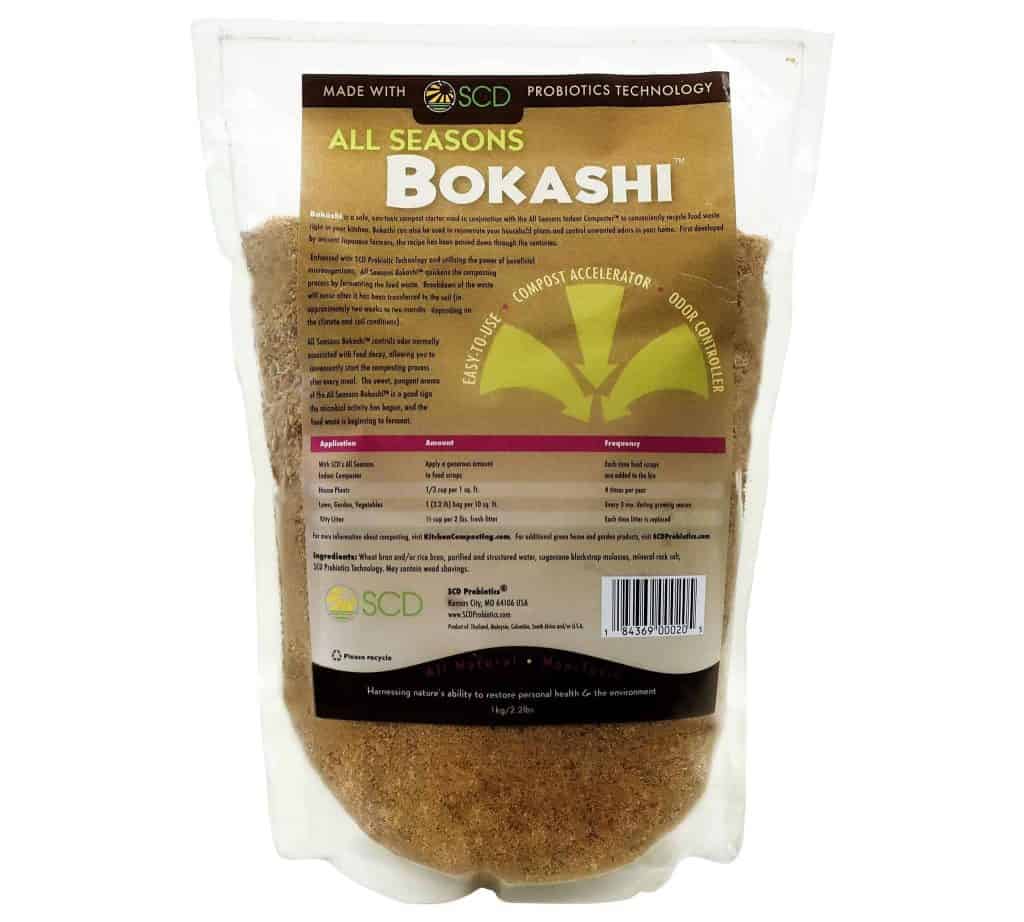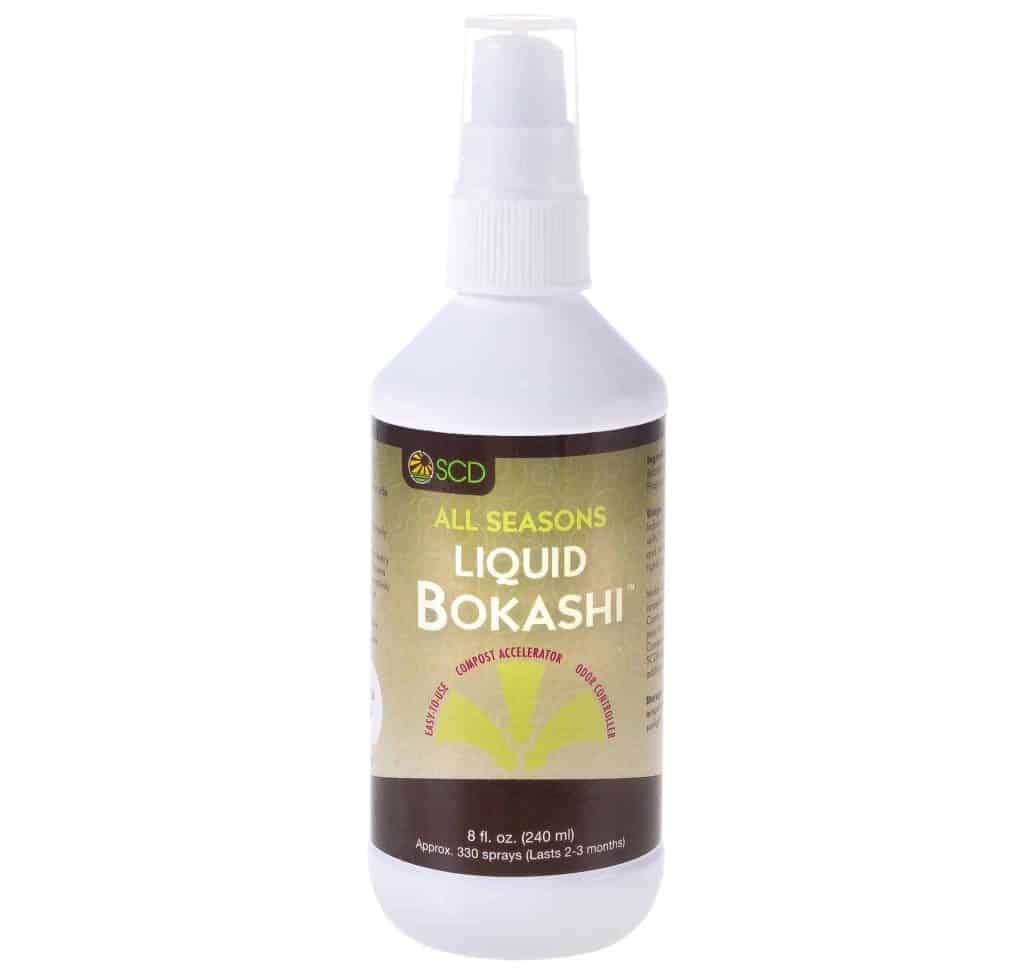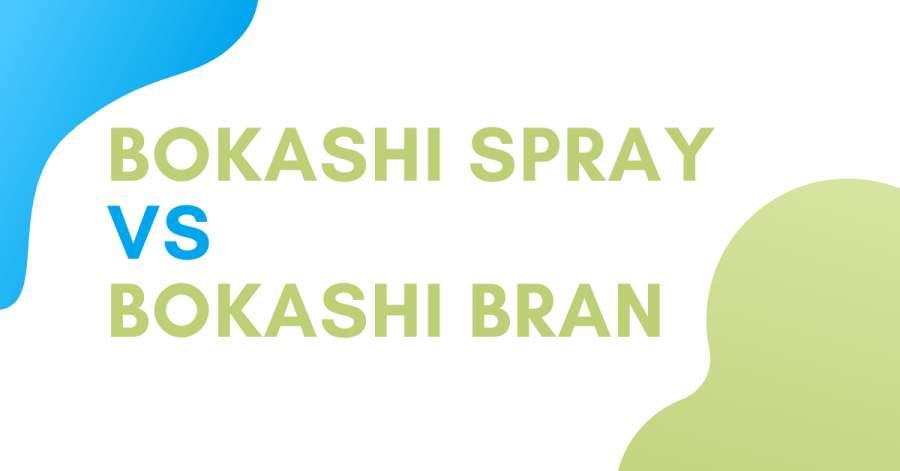Bokashi composting is gaining popularity as a good way to compost in urban areas and an easy way to compost meat and dairy.
You fill a bucket with your food waste and then innoculate it with some bokashi mix. That mix can come in the form of bran or a liquid spray.
In this article, I compare the two forms side by side.
Both bokashi bran and spray contain the same active ingredient (effective microbes), so both will do a good job. Bokashi bran is more widely available. It’s also cheaper than the spray and is useful for soaking up excess moisture. However, the liquid is easier to store and is cleaner to use.
What is bokashi bran?
Bokashi bran is also known as bokashi flakes.

It’s comprised of a dry, carbon-based substrate such as bran or sawdust that’s been inoculated with a mixture of water, sugar, and effective microbes.
The effective microbes are the crucial ingredient – they’re what ferment your food waste. The bran provides a substrate for these microbes to live on, and the sugar helps the microbial population propagate.
For every cup of waste, you’ll need to use about a tablespoon of bran. Bins with lots of meat, bones, or oily food will need slightly more.
What is bokashi spray/liquid?
Bokashi spray (amazon link) is also known as activated EM, or effective microbes.

It uses the same microbes as the bran, but instead of having a solid substrate to live on, the microbes are suspended in a water-sugar mix.
For every cup of waste, you’ll need to add about 2-3 spays of the bokashi spray. Again, increase this if you’re processing a lot of proteins.
This spray should not be confused with Bokashi leachate, bokashi tea for short. Leachate is the juice that comes out of your bokashi bin. While this juice will contain some effective microbes, you can’t be sure in what quantities or if it’s been contaminated. It’s not advised to use the tea to innoculate your next bin.
Bokashi bran vs spray
There isn’t much, if any, difference in the effectiveness of the two forms of bokashi. It’s more down to practicalities which one is a better fit for you.
Choice
There’s a lot more choice out there when it comes to buying bran. Several different brands offer their own version. You can pick between things like organic or non-organic, as well as several size options. There are also slight price differences between the brands.
The liquid is harder to come by (though this may change in the future), so there’s less choice.
With both bokashi bran and bokashi spray, you can opt to make your own. However, you can never be 100% sure that it will work. Homemade bokashi is more likely to fail.
Storage
Next, there’s storage to consider.
The liquid bokashi spray takes up less storage space, and there’s no worry of it attracting any vermin. The bran is bulkier, and if you accidentally leave it open it can attract rats.
Neither the bran or the liquid have a short expiry date as long as you store them correctly (in an airtight container away from direct sunlight).
They should last at least a year, but more likely 2. Some people report success even after 5 years of storage.
A homemade liquid will last around 3 months, while homemade bran will last the same amount of time as the shop-bought stuff (as long as it’s properly dried).
Effectiveness
Both the bran and the liquid use the same active ingredient, effective microbes, so both will be equally effective at fermenting your food waste as long as you use enough.
There is an argument that the spray will be able to penetrate the food scraps better, leading to a more even coverage and a speedier fermentation.
However, I’ve used both types before and didn’t notice any difference in the speed or quality of the output.
Ease of use
Bran is slightly messier to use and there’s a small risk of spillages.
The liquid is cleaner and quicker to apply. But a downside is that since you can’t see the spray, it can be difficult to ensure an even layer. You might find yourself going over bits again unnecessarily and wasting the liquid.
With the bran, you can clearly see where it’s already been applied so you won’t have this problem.
Another thing to consider is how wet your bin normally runs. If your bin is on the wetter side and you produce a lot of leachate, bran can help by soaking up some of this excess moisture. On the other hand, if your bin tends to produce very little liquid runoff, then the liquid spray can help to produce more ‘tea’.
Value for money
Disclaimer: the prices below are averages collected from a number of online sources correct at the time of publication. Prices are subject to change at any time and the below should be taken as a rough guide only.
On average, you’ll pay $5.75 for 1lb of non-organic bokashi bran. Buying in bulk will make this cheaper while opting for organic will increase the price.
The smallest quantity you can buy the bran in is 2.2 lbs. This will last the average family around 3-4 months of continuous use and cost you $12-13. That’s $3.60 per month.
Liquid bokashi works out to be more expensive per month than the bran. Prices average out at $16-17 for a bottle that will last you 2-3 months, that’s $6-7 per month.
Making your own bran or liquid can work out considerably cheaper. It’s definitely something to consider if money is an important factor.
Other uses
It’s not just bokashi composting that you can use the bokashi mix for. It also has other uses around the house.
The effective microbes in the mix are super effective at minimizing odors. If you have a smelly trash can, sprinkle or spray some bokashi in there, and within hours the smell will be gone.
It also works wonders in cat litter or added to your cover material in a composting toilet.
For those purposes, it’s probably better to have bran because you don’t want soggy cat litter or too much liquid in your composting toilet.
But with liquid bokashi, you can use it as a surface cleaner or to neutralize smelly shoes. For applications like these, bran is impractical.
